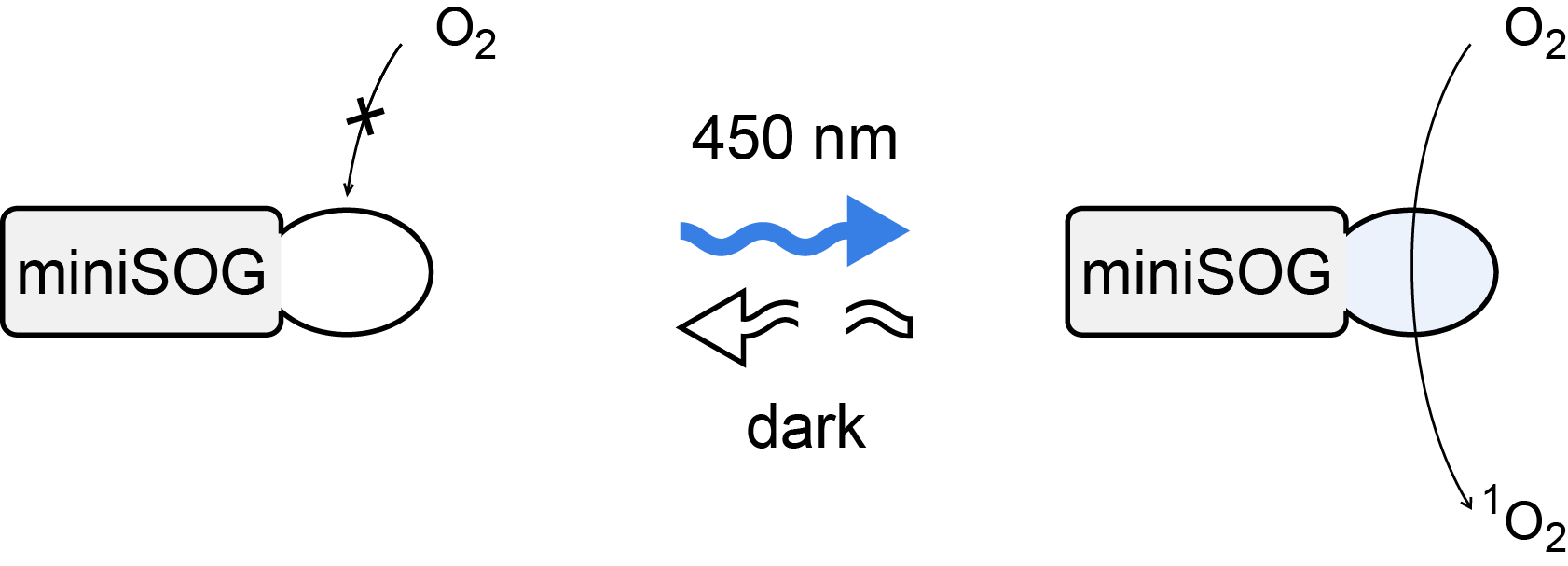miniSOG

| Photoreceptor | miniSOG |
| Binding partner | / |
| Cofactor | FMN |
| Source organism | Arabidopsis thaliana |
| Mode of action | singlet oxygen (ROS) production |
| Excitation wavelength | 450 nm |
| Reversion wavelength | dark |
| Excitation time | ? Add information |
| Reversion time | ? Add information |
Related original publications
View in Publication Search- Innervation modulates the functional connectivity between pancreatic endocrine cells. Elife, 2022
- Functionally asymmetric motor neurons contribute to coordinating locomotion of Caenorhabditis elegans. Elife, 2018
- Rapid Integration of Multi-copy Transgenes Using Optogenetic Mutagenesis in Caenorhabditis elegans. G3 (Bethesda), 2018
- Descending pathway facilitates undulatory wave propagation in Caenorhabditis elegans through gap junctions. Proc Natl Acad Sci USA, 2018
- Precision Optogenetic Tool for Selective Single- and Multiple-Cell Ablation in a Live Animal Model System. Cell Chem Biol, 2017
- Lysosome-associated miniSOG as a photosensitizer for mammalian cells. BioTechniques, 2016
- Highly efficient optogenetic cell ablation in C. elegans using membrane-targeted miniSOG. Sci Rep, 2016
- Optogenetic mutagenesis in Caenorhabditis elegans. Nat Commun, 2015
- A photosensitive degron enables acute light-induced protein degradation in the nervous system. Curr Biol, 2015
- Optogenetic inhibition of synaptic release with chromophore-assisted light inactivation (CALI). Neuron, 2013
- Photo-inducible cell ablation in Caenorhabditis elegans using the genetically encoded singlet oxygen generating protein miniSOG. Proc Natl Acad Sci USA, 2012
- Activity and longevity of insect growth regulators against mosquitoes. J Econ Entomol, 1975